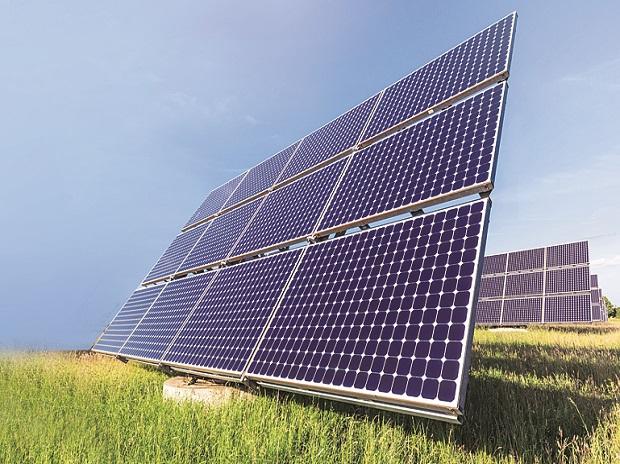Installations in the Indian solar market dropped by 49 per cent year-on-year to 1,737 MW in Q1CY19 compared to 3,377 MW added in Q1 2018. In Q1 2019, investments in the Indian solar sector totaled over $2.8 billion, 12 per cent lower compared to investments made in Q1 2018.
Activity in the Indian solar market was generally subdued due to general elections. Auction activity also grounded to a halt during the model code of conduct period.
Mercom India Research forecasts India to install approximately 9 gigawatts (GW) of solar capacity in the calendar year 2019.
According to Mercom India Research’s newly released Q1 2019 India Solar Market Update, y-o-y installations have dropped by 49 per cent even though quarter-on-quarter the volume increased by four per cent.
A significant development in the first quarter of 2019 was the decline in rooftop installations, which dropped by 33 per cent y-o-y, after four quarters of solid growth. Most of the decline can be attributed to the difficulty faced by installers in getting the required approvals due to general elections. The rooftop market is expected to bounce back in the second half of the year.
India’s cumulative installed solar capacity reached 30 GW at the end of Q1 2019. However, rooftop installations still only make up 12 per cent of total solar installations and the country has achieved only nine per cent of its targeted rooftop capacity addition of 40 GW by 2022.
Tariff caps have been another contentious issue as government agencies have been cancelling auctions after they have been conducted and winners announced. This has led to a lack of interest in some of the recent auctions. Over 800 MW of solar auctions were canceled in Q1.
Payment delays have cropped up again in the first quarter in Andhra Pradesh, Tamil Nadu, and Telangana. Some instances of payment issues have also been reported in Madhya Pradesh and at a DISCOM in Karnataka.
With the increase in demand for domestic modules over the past eight months, the imposition of the safeguard duty has helped domestic manufacturers. However, starting in July 2019, the safeguard duty rate will drop to 20 per cent.
Module price changes in Q1 2019 were minimal quarter-over-over.
Project costs declined for both large-scale and rooftop projects.
Upcoming projects
Mercom India Research forecasts India to install approximately 9 gigawatts (GW) of solar capacity in the calendar year 2019. The large-scale solar project development pipeline for India stands at 19.4 GW with 31.7 GW tendered and pending auctions at the end of Q1 2019.
Mercom’s report estimates solar installations in India to reach 71 GW by the end of 2022, almost 30 per cent lower than the 100 GW target set by the government. However, with an aggressive push and supportive policies, the goal is still achievable.
Bucking the trend from recent years, more new coal capacity was added compared to solar or any other generation source in Q1 2019 with 58 per cent. Solar, which has seen the highest addition in new capacity in almost every quarter over the past couple of years, accounted for 32 per cent of new capacity addition in this quarter.
Mercom says rooftop solar has plenty of growth potential but requires better policy and suitable financing mechanisms. Lending has become challenging over the past couple of quarters, which has contributed to slower growth. Net-metering issues and to a larger extent, financing difficulties, have also contributed to the slowdown in the rooftop solar market.
Larger domestic manufacturers are faring better as they are reducing their prices to capture business. Smaller manufacturers meanwhile are struggling. It is unclear how the market will shake out after the safeguard duty drops to 20 per cent, said the report.
“With the elections out of the way and NDA government coming back to the office, we expect the administration to come out with bigger and bolder goals for renewables over a longer time horizon. Even though short-term challenges persist, things look brighter for the Indian solar market after the elections,” said Raj Prabhu, CEO of Mercom Capital Group.
Key Highlights:
- Solar installations in India in Q1 2019 totaled 1,737 MW vs 3,377 MW added in Q1 2018
- In Q1 2019, large-scale installations totaled 1,474 MW (85 per cent), while rooftop installations accounted for 263 MW (15 per cent)
- Cumulative installed solar capacity in India reached 30 GW at the end of March 2019. Of this, cumulative rooftop solar installations amounted to 3.5 GW
- Over 12 GW of solar was tender, and 3 GW was auctioned in Q1
- Mercom forecasts India to install approximately 9 GW of solar capacity in the calendar year 2019
- Solar accounted for 32 per cent of the new power capacity added in Q1 2019
- In Q1 2019, investments in the Indian solar sector totaled over $2.8 billion, 12 per cent lower compared to investments made in Q1 2018.
